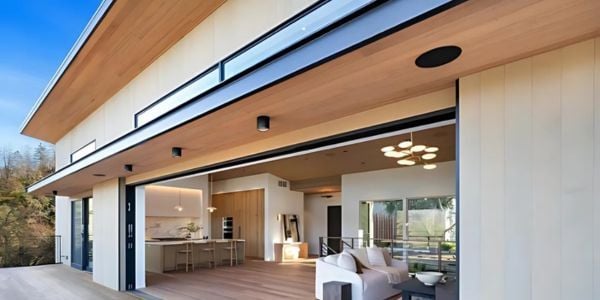
Mataverde Resource Library: Data Sheets, Guides, & Fire Ratings
Access technical data sheets, WUI certifications, Class A fire ratings, and installation guides for Mataverde decking and wood siding, Trespa Pura NFC, and design portfolios
Welcome to the Mataverde Resource Library
This comprehensive library provides architects, builders, and homeowners with necessary documentation needed for successful exterior design projects. From technical specifications and fire-rating compliance to detailed installation guides and design inspiration, you'll find it here. Don't see the answer to your question? Contact us we are happy to find you the answer.
Ipe Wood Decking & Siding
Data Sheet
![]()
Click on image to view and download PDF
Garapa Wood Decking & Siding
Data Sheet
![]()
Click on image to view and download PDF
Jatoba Wood Decking
Data Sheet
![]()
Click on image to view and download PDF
Cumaru Wood Decking & Siding
Data Sheet
![]()
Click on image to view and download PDF
Santa Maria Wood Decking
Data Sheet
![]()
Click on image to view and download PDF
Massaranduba Wood Decking
Data Sheet
![]()
Click on image to view and download PDF
Exterior Hardwoods Mechanical Properties Comparison Chart
![]()
Click on image to view and download PDF
Types of Wood Siding Comparison Chart
![]()
Click on image to view and download PDF
ThermaWood Hem-Fir & ThermaWood FR Hem-Fir
Thermowood Ash Decking and Siding
 Climate-Shield Wood Rainscreen Siding System
Climate-Shield Wood Rainscreen Siding System
Climate-Shield CST1 Siding System for Trespa Pura
About This Resource Directory (Page FAQ)
Q. What types of documents are available in this resource library?
Answer: This directory contains technical data sheets (PDFs), fire rating compliance documents, detailed installation guides (for decking, TNG, and rainscreen siding), project portfolios, and design eBooks.
Q. How are the resources on this page organized?
Answer: Resources are organized into five primary categories: Technical Specifications (Section I), Compliance and Safety (Section II), Installation and Maintenance (Section III), Project Inspiration (Section IV), and Product FAQs (Section V).
Q. Where can I find information on the environmental status of Mataverde products?
Answer: All sustainability and environmental compliance certifications, including documents for Trespa Pura NFC, are located in the Environmental and Safety Documentation (Section II.C).


.jpg?width=600&height=300&name=FSC%20Machiche%20Wood%20Rainscreen%20Siding%20Using%20the%20Climate-Shield%20System%20at%20UCSB(600%20x%20300%20px).jpg)
%20ThermaWood%20FR%20premium%20wood%20vertical%20siding%2c%20stained%2c%20%20on%20the%20San%20Francisco%20Bay%20600x300.jpg?width=600&height=300&name=Mataverde%20SaferWood%20fire%20retardant%20treated%20wood%20(FRTW)%20ThermaWood%20FR%20premium%20wood%20vertical%20siding%2c%20stained%2c%20%20on%20the%20San%20Francisco%20Bay%20600x300.jpg)

